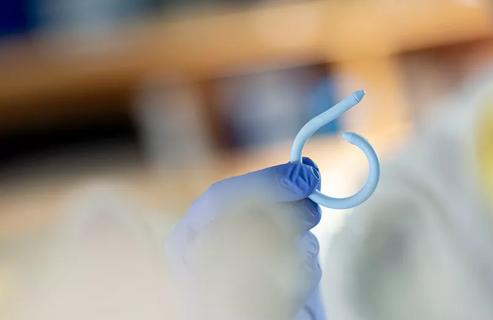Cleveland Clinic surgeons describe a new technique for harvesting a rectal mucosa graft
Cleveland Clinic reconstructive urologists and colorectal surgeons describe for the first time a technique using the single-port (SP) robotic system to harvest a rectal mucosal graft (RMG) in a patient with extensive urethral stricture disease. They reported their initial experience in Urology.
Advertisement
Cleveland Clinic is a non-profit academic medical center. Advertising on our site helps support our mission. We do not endorse non-Cleveland Clinic products or services. Policy
Reconstructive urologist Hadley Wood, MD, senior author of the paper and staff in Cleveland Clinic’s Center for Genitourinary Reconstruction, says the technique is a safe and effective option for harvesting RMGs. In addition, the impressive length of the graft, 21 by 3 cm, is believed to be the longest RMG reported in the literature.
An RMG isn’t the preferred choice for reconstructing urethral strictures. But when the tissue inside the cheek, known as a buccal mucosa graft (BMG), is insufficient — an RMG is often a viable alternative.
This was the case for a 57-year-old patient who presented to the emergency department with urgency and urinary retention symptoms and a history of recurrent urinary tract infections. Urethral x-ray revealed a stricture that spanned the entire length of the anterior urethra. And given its length, the team suspected that a bilateral inner cheek tissue would be insufficient to repair the stricture without utilizing other tissue, like adjacent skin flaps or split thickness skin grafting.
“He was a good candidate for a rectal mucosal graft, so we discussed both options. He ultimately elected to move forward with the rectal mucosa harvest urethroplasty, which was done in collaboration with our colorectal surgery colleagues,” says Dr. Wood.
The following video describes the team’s approach to preoperative care, setup, SP docking, RMG harvest, urethral reconstruction, postoperative care and follow-up. Notably, the harvest was completed in less than two hours and with minimal donor site morbidity.
Advertisement
The SP robot is an ideal platform for harvesting a long-segment RMG for a substitution urethroplasty. Cleveland Clinic urologists have been using the SP robot for several years. Still, the technology has not been widely adopted across other specialties, likely owing to issues of cost and accessibility.
“The SP robot is a great fit for transanal surgery; it marries modern endoscopy with a technologically advanced robotic system. However, it may be unfamiliar territory for some urologists. As the technology becomes more ubiquitous and data continue to support its utility, particularly for donor site outcomes, that may start to change,” concludes Dr. Wood.
Featured image: The top image shows the rectal mucosa graft upon extraction and the bottom is the
reconfigured final graft.
This image was originally published by Emrich Accioly JP, Zhao H, Ozgur I, Lee GC, Gorgun E, Wood HM. Single-Port, Robot-Assisted Transanal Harvest of Rectal Mucosa Grafts for Substitution Urethroplasty. Urology. 2022 Aug;166:1-5. doi: 10.1016/j.urology.2022.04.018. Epub 2022 May 2. PMID: 35513133and reprinted with permission from Elsevier.
Advertisement
Advertisement

The low anterior access approach using the single-port robot is gaining attention within the field

Revolutionizing pediatric urology with a new, less invasive approach

Retrospective study shows SGLT-2 inhibitors may lead to worse urologic outcomes

What it could mean for the future of ambulatory monitoring for bladder conditions

Study reinforces the benefits of using cystatin C

New study sheds light on national trends in urology residency, former CCLCM alum comments

Pediatric urologists lead quality improvement initiative, author systemwide guideline

Fixed-dose single-pill combinations and future therapies